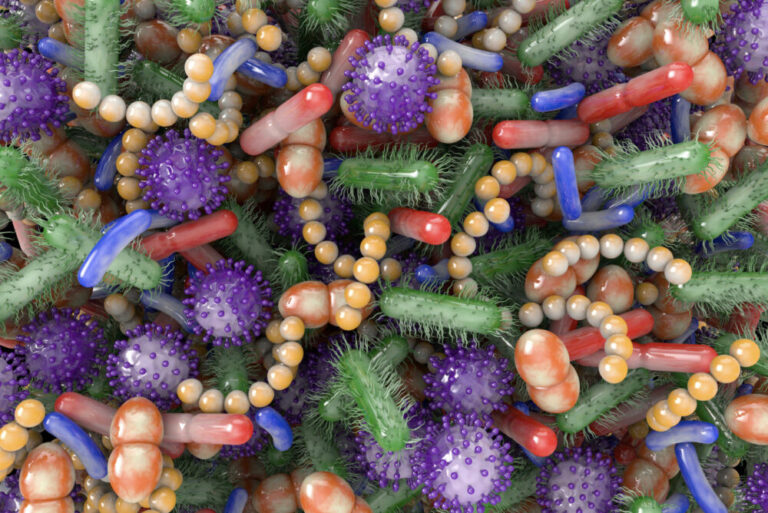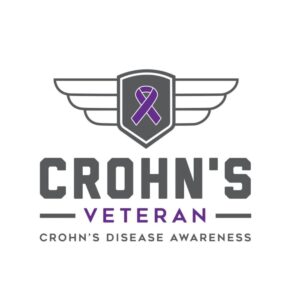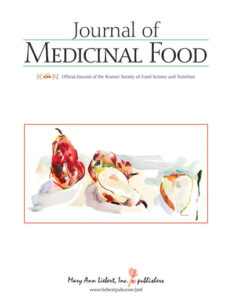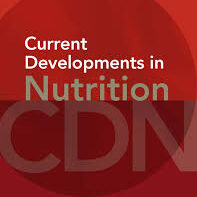Crohn’s Disease vs. Ulcerative Colitis
Danielle Gaffen, MS, RDN, LD
- Last Updated
Co-written by Luis Tejeda
Have you ever wondered the difference between Crohn’s disease vs. ulcerative colitis? Many of my clients ask me what the difference is between the two conditions. While both share similar symptoms and are both types of inflammatory bowel disease (IBD), they are not the same illness and affect different areas of the GI tract. This blog will compare the key differences between Crohn’s disease and ulcerative colitis (UC).
What is Ulcerative Colitis?
Ulcerative Colitis (UC) is a type of inflammatory bowel disease (IBD), where the lining of the colon (large intestine) and/or rectum is inflamed. The inflammation is continuous and may extend across part or all of the colon, and often starts in the rectum. Ulcers form related to the chronic inflammation, which can cause pus, mucous, and blood in stool. This commonly results in abdominal pain and the frequent need to empty the colon.
What is Crohn’s disease?
Crohn’s disease is a type of inflammatory bowel disease (IBD). Crohn’s disease can affect any part of the GI tract from the mouth to the anus, with inflammation occurring in some parts of the GI tracts in between healthy areas. Additionally, the inflammation may extend through the entire thickness of the intestinal wall.
How can you tell the difference between Crohn’s vs ulcerative colitis?
In Ulcerative Colitis, inflammation is limited to the colon and is continuous. In Crohn’s disease, inflammation can “skip”, and be in multiple locations in the gastrointestinal tract. The image below shows these differences:
Diagram of small and large intestine courtesy of NYP.org
Crohn’s disease symptoms
The following symptoms are commonly experienced with Crohn’s disease:
- diarrhea
- abdominal cramps and urgency
- abdominal pain
- fever
- blood in the stool
- fatigue
- weight loss
- loss of appetite
Symptoms may also occur from secondary disease complications related to severe Crohn’s disease. Some of these include pain related to fistulas and blockages related to strictures.
Ulcerative colitis symptoms
The following symptoms are commonly experienced with ulcerative colitis:
- diarrhea
- abdominal cramps and urgency
- abdominal pain
- blood in the stool
- fatigue
- weight loss
- loss of appetite
Crohn’s disease vs Ulcerative Colitis Quick Reference Table
The table below explains the similarities and differences between Crohn’s disease and UC, including symptoms and treatment of both conditions.
| IBD Condition | Disease Expression | Symptoms | Treatment |
| Crohn’s Disease | – Inflammation in any part of GI tract; inflammation can skip intestinal sections – Secondary complications like fistulas and strictures | – diarrhea – abdominal cramps and urgency – abdominal pain – fever – blood in the stool – fatigue – weight loss – loss of appetite | – medication – diet and nutrition – surgery |
| Ulcerative Colitis | – Inflammation in colon; inflammation is continuous | – diarrhea – abdominal cramps and urgency – abdominal pain – blood in the stool – fatigue – weight loss – loss of appetite | – medication – diet and nutrition – surgery |
Is Crohn’s disease or ulcerative colitis more common?
Ulcerative colitis may be slightly more common than Crohn’s disease:
- In 2010, a research study measured the prevalence of Crohn’s disease and ulcerative colitis in Olmsted County, Minnesota. The population data was estimated to have 785,000 U.S. residents with CD and 910,000 with UC.
- However, these figures should be considered a rough approximation of the true number of Crohn’s disease and UC cases in the US, as the adjusted prevalence was based on the 2010 US Caucasian population.
- More research is needed for an updated prevalence of both conditions as more than 70,000 new cases of IBD are diagnosed in the US each year. Additionally, we need data a more diverse population and geographical location.
Which is worse, Crohn’s disease or ulcerative colitis?
One form of IBD is not necessarily “worse” than the other, as the term “worse” is subjective to the person who may be experiencing symptoms or how one views each of the conditions.
What causes Ulcerative Colitis and Crohn’s disease?
Several of the main factors that researchers are learning can cause or contribute to IBD are:
1. Genetics
2. Microbiome
3. Immune system
4. Environmental factors
1. Genetics
IBD disease tends to run in families, so if you or a close relative has the disease, your family members have an increased chance of developing Crohn’s or colitis.
2. Microbiome
Research is indicating that in many chronic health conditions, including IBD, microbiomes are not as healthy. Here are the two things that we currently understand for people with Crohn’s disease and ulcerative colitis:
- the balance of “good” and “bad” bacteria gets out of whack and the bad bacteria start to dominate…and,
- with less good bacteria around, the diversity, or number of different types of organisms in the gut microbiome, diminishes.
The good news is that we have the power to change our gut health. Research is emerging that diet plays a big role in shaping the composition of the microbiome…Meaning that we have the power the help our gut microbiomes.
3. Immune System
Research suggests that Crohn’s and UC could be triggered by an interaction between a virus or bacterial infection in the intestines and the body’s immune response.
In people with IBD, it is thought that immune system makes a mistake and thinks that harmless things in the intestine like bacteria, food, healthy body tissue, or other harmless or even beneficial substances are foreign invaders, so the immune system mounts an inflammatory response.
Immune cells accumulate in the intestines causing IBD symptoms such as abdominal pain, diarrhea, rectal bleeding, weight loss, fever, and fatigue, and thickening of the intestinal wall. The inflammation is chronic, meaning that it doesn’t go away.
4. Environmental Factors
Where you live appears to play a role in the development of IBD. The incidence of IBD is higher in developed countries than in developing countries, and in urban versus rural areas. These findings could be partly explained by increased access to health care and better medical records in more developed than less developed countries.
Also, researchers have hypothesized that improved sanitation in industrialized countries might reduce exposure to infections during childhood, thus restricting maturation of the mucosal immune system, which could result in an inappropriate immune response when exposure to infectious microorganisms occurs later in life.
Interestingly, related to environment, researchers have come to a general consensus that the typical “Western Diet”, present in the areas just mentioned in the Western part of the world, could be increasing the prevalence of IBD! The western diet has a heavy emphasis on meat, omega 6 polyunsaturated fatty acids, and simple sugars—the fast foods so prevalent in our society. This diet promotes inflammation.
How are Crohn’s disease and Ulcerative Colitis diagnosed?
No single test result is enough for a medical doctor to diagnose IBD. Here are the several types of tests commonly used in the diagnostic process for Crohn’s disease and ulcerative colitis:
- Blood tests
- Stool tests
- Colonoscopies
- Biopsies
- CT scans and/or MRI scans
Once your doctor has reviewed all the tests performed, a diagnosis of Crohn’s disease or UC can be made.
Does Ulcerative colitis turn into Crohn’s?
In some cases, people who have been diagnosed with ulcerative colitis are later found to actually have Crohn’s disease. These patients may have had Crohn’s disease from the beginning, even though that was not the original diagnosis.
Part of the reason for this is that Crohn’s disease sometimes affects just the large intestine (called Crohn’s colitis), making it appear as if ulcerative colitis is the true diagnosis. As time goes on, and some of the signs or symptoms become apparent, the diagnosis may be changed.
Take Home Message
While Crohn’s disease and ulcerative colitis are the two main forms of inflammatory bowel disease (IBD), they are not the same illness and affect the GI tract differently.
Looking to learn more?
Here are some other helpful articles:











































